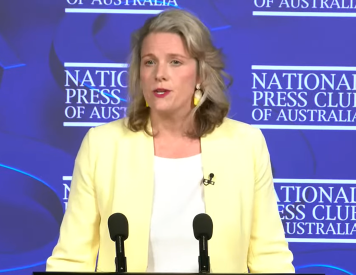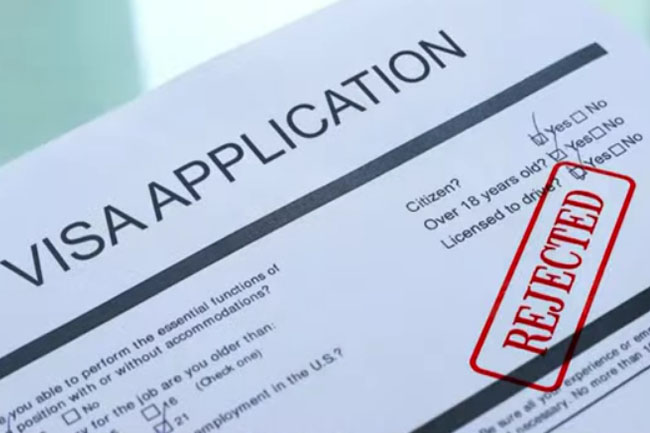The Government must plan effectively and carry out immigration compliance activities going forward, writes Dr Abul Rizvi.
THE PRELIMINARY ESTIMATE of net migration in calendar 2022 hit a new record of 386,970. In the 12 months to March 2023, another new record was set at 454,400. Media commentary criticising the Albanese Government for allowing this level of net migration is currently focused on the impact on the housing crisis and on a per capita recession.
Two questions arise: what drove this rapid increase in net migration and what will net migration be in 2022-23, calendar 2023 and 2023-24 and beyond given the assumption in the recent Intergenerational Report of net migration coming down to a long-term average of 235,000 per annum?
Note the recent net migration figures published by the Australian Bureau of Statistics (ABS) are preliminary estimates and subject to revision due to the requirement that for an overseas arrival to be counted in net overseas migration, they must have been out of the country for at least 12 months out of 16 and then must remain in Australia for at least 12 months out of 16 (and vice versa for departures).
Drivers of record net migration levels
There were two main drivers of net migration in 2022 which continued into 2023:
First, we had an extraordinarily hot labour market with job vacancies hitting unprecedented levels. A hot labour market attracts more migrants to Australia (more arrivals including via non-standard pathways) and encourages more migrants to remain longer (fewer departures).
While there has been some decline in job vacancies in mid-2023, these are still at very elevated levels. Employment growth continues at very strong levels but is forecast to weaken as higher interest rates continue to slow the economy. That will increase talk of a per capita recession.

Second, when international borders re-opened, Australia still had a range of COVID-era policy settings in place, including unlimited work rights for students; a fee-free COVID visa stream with unlimited work rights which could readily be accessed by anyone in employment or holding an offer of employment; additional employment flexibilities for working holiday makers, including the ability to access a third working holidaymaker visa, a 30 per cent increase in places for the work and holiday worker visa and a demand-driven Pacific Australia Labour Mobility (PALM) visa.
While many of these policy settings have now been withdrawn, this mostly did not take place until either 1 July 2023 (18 months after international borders re-opened) or even later. There was some rationale for this delay in 2022 due to the intense focus on labour shortages. The rationale for the delay beyond that is not clear but it meant net migration would remain higher for longer. It will also mean a much larger number of temporary entrants in Australia who may end up in "immigration limbo" (unable to access permanent residence but unwilling or unable to depart).
The Albanese Government also introduced a range of other immigration policy changes, some of which will lower net migration while others will increase it. Albanese Government measures that are or will contribute to increased net migration include:
- Larger migration and humanitarian programs;
- Longer temporary graduate visas;
- Direct pathway to Australian citizenship for long-stay NZ citizens;
- Aged care labour agreement; and
- Pacific Engagement Visa.
While some argue faster visa processing under the Albanese Government also contributed to increased net migration, that is only true if the plan is to let both onshore and offshore visa application backlogs keep growing indefinitely. That would be fundamentally bad practice and creates a honeypot for unscrupulous operators to undermine the visa system as was the case for much of the period after 2015.
Albanese Government measures that should in time contribute to lower net migration include:
- Increased minimum salary requirement for employer-sponsored visas;
- Tightening of student visa requirements; and
- Increased funding for immigration compliance after many years of this being reduced.
The Albanese Government has foreshadowed further measures to tighten policy in the coming months. The delay in announcing and implementing these will mean net migration remains well above the Albanese Government’s long-term net migration assumption of 235,000 per annum for longer.
Composition of net migration in 2022
It’s also worth looking at the composition of net migration in 2022 to see what this tells us about net migration trends.
Table 1: Composition of net migration in 2022
|
|
Arrivals |
Departures |
Net |
|
Students |
236,660 |
17,250 |
219,340 |
|
Skilled Temporary |
39,260 |
7,160 |
32,110 |
|
Visitor |
84,680 |
15,250 |
69,430 |
|
Working Holiday |
44,150 |
3,380 |
40,800 |
|
Other Temporary |
32,850 |
45,530 |
-12,690 |
|
Family Permanent |
24,010 |
6,630 |
17,650 |
|
Skill Permanent |
31,190 |
6,310 |
24,890 |
|
Special Elig and Humanitarian |
10,340 |
110 |
10,230 |
|
Other Permanent |
10,670 |
10,010 |
660 |
|
NZ Citizen |
34,980 |
21,240 |
13,740 |
|
Australian Citizen |
68,370 |
91,050 |
-22,680 |
|
Other |
2,470 |
8,990 |
-6,520 |
|
Total |
619,610 |
232,640 |
386,970 |
Source: Data provided by ABS demography section.
Apart from the very high level of student arrivals (driven by unprecedented offshore student visa applications), two things stand out.
First, the very large contribution from visitors extending their stay after arrival set a new record contribution to net migration of 69,430. Visitors extending their stay contributed more to net migration in 2022 than permanent migrants put together (52,770).
The Department of Home Affairs (DHA) would do well to look into why so many people on visitor visas are extending stays given they were assessed as meeting the requirement of a "genuine visit". This is a trend that started in the two years before the pandemic so DHA should be well aware of it. The problem may simply be the workload at some key overseas posts is just too much to apply the required level of scrutiny to visitor visa applications. The reasons for visitors extending stay for over 12 months include:
- Asylum applications which in 2022 were around 20,000 and rising back to pre-COVID levels;
- Visiting family, particularly parents;
- Applying for an onshore student visa to avoid high offshore student visa refusal rates; and
- Applying for a COVID stream visa to take advantage of Australia’s hot labour market.
Second, the very low level of departures, particularly departures of temporary entrants such as students and working holiday makers, is indicative of the effects of COVID-era policy settings plus a very hot labour market.
Outlook for net migration
For 2022-23, we can be reasonably confident net migration will be around the same level as for the 12 months to March 2023 (454,400). The net migration estimate for the June quarter of 2022 (75,400) will be replaced by the net migration estimate for the June quarter of 2023. Assuming net migration for the June quarter of 2023 is around the same as net long-term and permanent movements (90,140), that would give a net migration estimate for 2022-23 of around 469,000.
It will more likely be slightly lower than that if the relationship between net migration and net long-term and permanent movements returns to normality where the latter is generally higher than net migration.
For the period prior to COVID, net long-term and permanent movements were around 10 per cent to 20 per cent higher than net migration, particularly during the high net migration quarters of March and September.
During COVID, net migration fell to well below net long-term and permanent movements while for the 12 months after international borders re-opened, net migration was well above long-term and permanent movements.
In the March quarter of 2023, net long-term and permanent movements (154,890) were slightly above net migration (152,200). This suggests we may be returning to a more usual relationship between the two.

For calendar year 2023, net long-term and permanent movements for the seven months to the end of July 2023 had reached 317,800, driven predominantly by 88,810 in February (mainly students) and 72,770 in July (students and skilled migrants). Unless 2023 reverts to the usual situation of net long-term and permanent movements being consistently higher than net migration (which will happen at some stage), it is possible net migration in calendar 2023 may be as high as for the 12 months to March 2023.
The key will be the effects of recent and forthcoming policy tightening, the level of resources available to DHA to apply the required level of scrutiny to visa applications and immigration compliance activity as well as the state of the labour market.
For 2023-24 and beyond, net migration will depend on whether the Government considers the long-term net migration assumption of 235,000 as a target or whether it sees this as just a Treasury assumption that can be ignored.
If the former, the Government will need to tighten policy significantly but without reducing the permanent migration program. If it were to do that, then the number of temporary entrants left in long-term immigration limbo would rise even faster; a very poor policy outcome.
Dr Abul Rizvi is an Independent Australia columnist and a former Deputy Secretary of the Department of Immigration. You can follow Abul on Twitter @RizviAbul.
Related Articles
- ABS data spurs media into 'recession' panic
- COVID visa stream to be closed at long last
- Government seeking to address student visa rorting
- Nixon report challenges Home Affairs over visa system exploitation
- 'COVID visa stream' has overstayed its welcome
 This work is licensed under a Creative Commons Attribution-NonCommercial-NoDerivs 3.0 Australia License
This work is licensed under a Creative Commons Attribution-NonCommercial-NoDerivs 3.0 Australia License
Support independent journalism Subscribe to IA.














